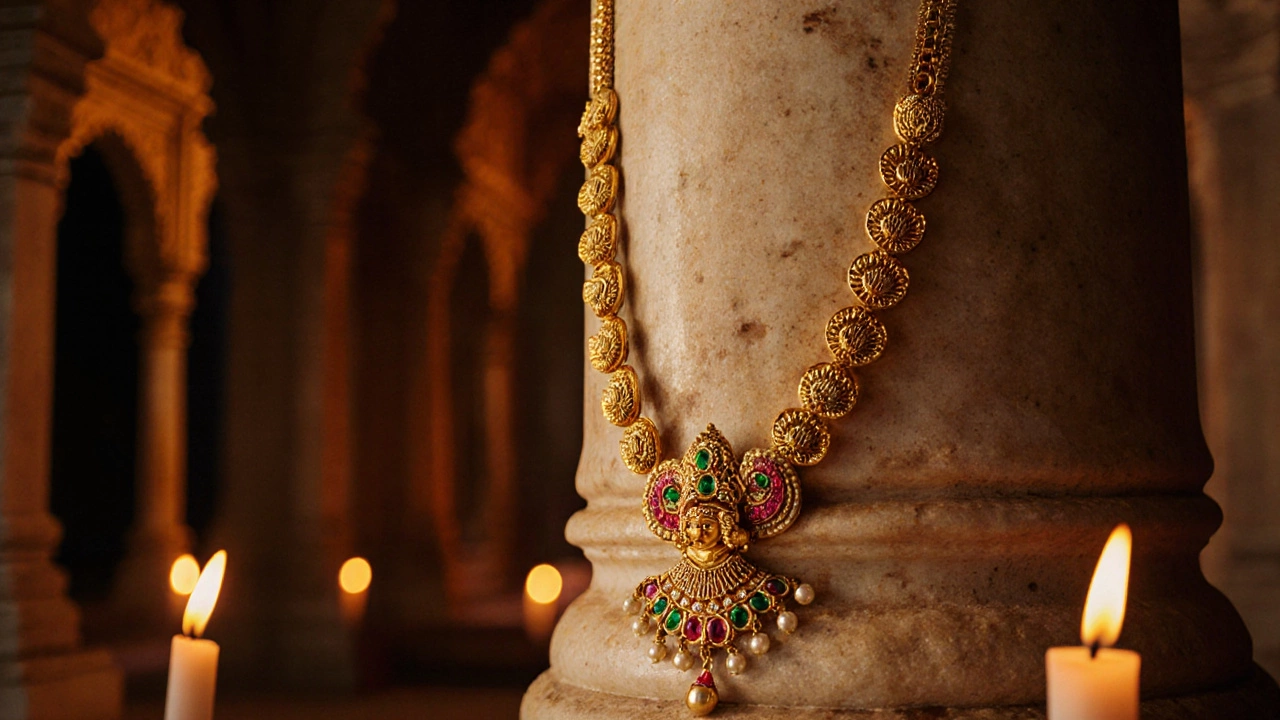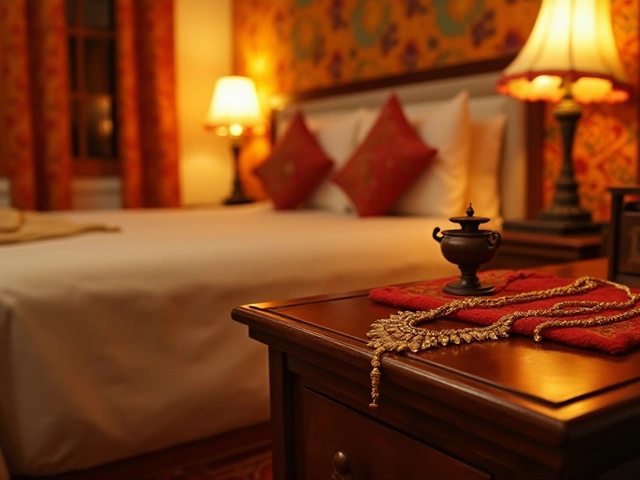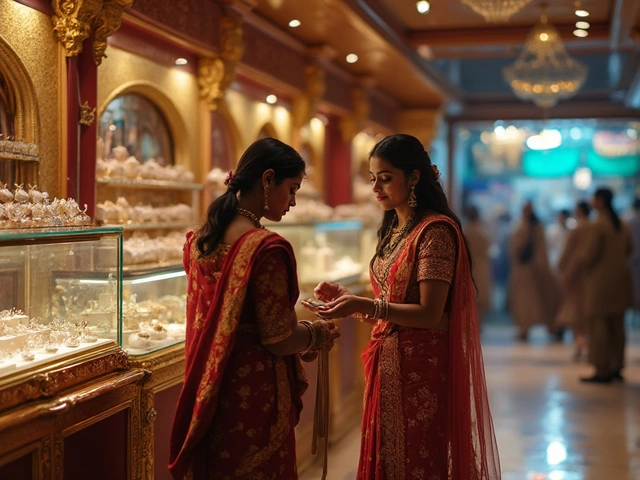Indian Temple Jewellery
When talking about Indian temple jewellery, a style that draws its designs from ancient temple art and mythology, often featuring delicate metalwork and vibrant gemstones. Also known as temple jewelry, it reflects a blend of devotion and high craft. The art relies heavily on Gold, the primary metal prized for its luster and durability in temple pieces, sometimes called pure gold and on Silver, a softer alternative that lets artisans create finer filigree work, also referred to as sterling silver. Stones like Gemstones, particularly rubies, emeralds and pearls, add colour and symbolic meaning, often called precious stones complete the look. Together these materials form a cultural expression that has shaped Indian adornment for centuries.
Indian temple jewellery isn’t just a fashion statement; it’s a storytelling medium. Each motif – whether a deity’s silhouette, a lotus petal or a mythical animal – carries a specific meaning rooted in religion and regional folklore. The style encompasses intricate patterns (Indian temple jewellery patterns, the repeating designs that echo temple carvings) and requires skilled artisans (craftsmanship, the hand‑work and techniques passed down through generations) who know how to balance metal weight and gemstone placement. Because the pieces often serve as heirlooms, understanding authenticity becomes essential.
Materials and Authenticity
The most common metal is 22‑carat gold, marked with the hallmark 916, which translates to 91.6% pure gold. Silver pieces usually carry a 925 stamp, indicating 92.5% purity. When you pick up a temple set, look for these hallmarks – they’re the first line of defense against cheap imitations. The gemstones should be free of synthetic coatings; a quick scratch test or a jeweler’s loupe can reveal if a stone is natural. Regional variations also affect material choice: South Indian temples favor bright gold and vibrant rubies, while the North often uses cooler silver and white pearls.
Beyond raw material, the design process itself adds value. Artisans begin with a sketch inspired by a temple sculpture, then hand‑carve wax models before casting the metal. This process influences the final piece’s durability and visual depth. If you’re buying online, ask the seller for photos of the casting stage – it’s a good sign they respect the craft.
Care is simple but vital. Gold polishes easily with a soft cloth; silver benefits from a gentle anti‑tarnish cloth. Gemstones should be stored separately to avoid scratches. Regular cleaning prevents buildup that can dull the intricate details that make temple jewellery so distinctive.
Why do people still choose temple jewellery for modern events? Because the style bridges heritage and contemporary style. A bride might pair a gold temple necklace with a sleek lehenga, while a fashion‑forward professional could wear a silver temple cuff with a minimalist outfit. The versatility enables the pieces to travel from temple rituals to runway shows without losing their essence.
In terms of symbolism, each element tells a story. A lotus represents purity, a peacock feather denotes beauty, and a swan illustrates grace. Understanding these symbols helps you pick pieces that resonate personally. For example, if you value resilience, a design featuring the “Ganesha” motif (the elephant‑headed god) can serve as a daily reminder of overcoming obstacles.
Regional styles also add flavor. The Keralite version often includes tiny bead work and intricate filigree, while the Rajasthani approach showcases bold, oversized motifs and extensive use of enamel. Knowing where a piece originates can guide you toward the aesthetic you prefer.
When you’re ready to shop, consider the following checklist: verify hallmarks, ask about the source of gemstones, inquire about the artisan’s background, and request a care guide. These steps ensure you get a genuine, lasting piece rather than a mass‑produced replica.
Below you’ll find a curated collection of articles that dig deeper into each of these aspects – from material science to cultural meaning, from buying tips to maintenance tricks. Whether you’re a first‑time buyer or a seasoned collector, the posts ahead will give you actionable insights and practical advice to make the most of your Indian temple jewellery journey.
Temple Gold Explained: History, Design, and Buying Guide
Discover what Temple gold is, its history, designs, cultural significance and how to buy authentic pieces with confidence.





